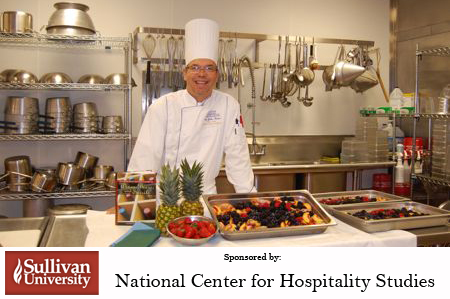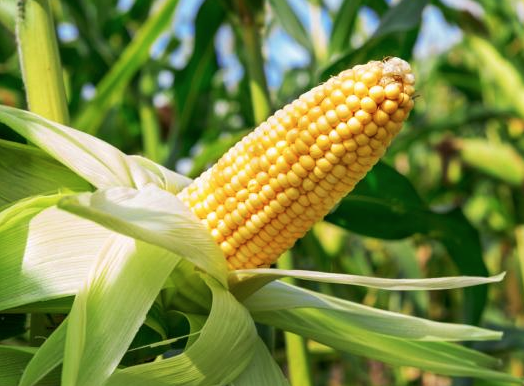Things are a bit unsettled right now. The summer season seems to have accelerated, we’re back in school, and I can’t seem to get my head around events like Burger Week, closely followed by Restaurant Week.
Don’t get me wrong, I love to be busy, I can’t stand too much puttering around, (probably not a good sign for my golden years to come) I like to be active and engaged. Sometimes though I feel that this time of year moves so quickly that it’s hard to grasp the full potential of anything that comes my way. Working through this is akin to catching that big wave you dreamed about and holding on for dear life. You’re thrilled by the ride but falling off is always in the back of your mind.

When chefs fall off, lose their way, or just take a step back, it is often for a variety of reasons. Physical and mental exhaustion are generally the main issues that confront student and chef alike It’s no different in most high pressure, daily performance jobs, but for me, there is also a personal side. There is a part of every chef that sometimes wonders if they are relevant if their food makes a difference. If I weren’t cooking farm to table, would someone else do it? Would someone step up and continue to teach and train the next generation if one day I just decided to walk away?
That’s not to say that I am irreplaceable, but to continue to advocate for a cause, one must either remain in the game or have willing disciples to carry on. So much depends on the assumed continuity that doubt creeps in. Who wants to work this hard? What value can we place on the work we do now, and what may be lost when we step away? For me, the answer lies in the right side of my brain. What keeps me coming back is the prospect of a new tidbit of information or a new revelation about my craft. I’m not talking about new foods as much as the variety of experiences that all chefs have on a daily basis. Shared experiences are a strong motivating factor for most of us. We get together at times and talk shop, share secrets and commiserate about the same problems. Part therapy, part skull session, these get-togethers only reinforce my desire to stay connected, even when things are unsettled and in flux.
The best way to find your center again is to focus on what is directly in front of you. Contrary to what might be a smart business move, short-term goals are what get me back on point. Long-term goals are for quieter moments, now, in the middle of the summer, with the patio pumping and customers clamoring for food and drink I’m going to put all my energy into the here and now.
My visits to the farmer’s markets are for the evening service and perhaps a few days beyond. I order each day for what I may use that week, no more. Right now, its corn and tomatoes, squash and beans. What can I do with this now? There will be a time later in the summer when I think about tomatoes as a preserved item, freezing them, saucing them, even drying them for the winter. The dishes that I focus on now also re-direct my technique. When you get to a certain point in your career, even your skill set can be a cause for concern. Muscle memory is a great thing, getting you farther in your career than you might think. But there are times when complacency sets in, and you literally go through the motions every day. I’ve found that teaching cooking only reinforces that if you don’t search out new methods, interact with peers and even observe students with the intention of learning something new.
Yes, you can learn from anyone, and I tell my students all the time that you learn best from your mistakes. It could be a recipe, a cooking method or even steps into your daily routine that may need some fine-tuning so that you can be rejuvenated. For years I did my corn soup the same way, cutting the kernels off and disposing of the cob. About a decade ago I started using the cob to infuse into the cream for my soup. Several years ago, I observed a peer smoke the cob for more flavor and adopted that for occasional use. This kind of outreach will continue to pique my interest and keep me searching for the better way. You have to be fairly secure in your own skills to get the most benefit out of this theory, but it’s something we try to pass on to our students.

Corn, lovely corn
What brings this all full circle for me stems from a recent viewing of a Chef’s Table episode with Alain Passard. At a certain point in his life and career, he had a moment of crisis that forced him to make choices that could have ruined his restaurant and in his words his life.
The simple act of removing most of the meat from his menu and concentrating on vegetables was thought to be disastrous.
What it turned out to be was enlightening and liberating in the end. Skill and experience smoothed the transition immensely, but his wiliness to refocus and start again was a tonic for a chef in flux. It serves to reaffirm in me that periodic assessment does not have to lead to resignation, but to another door.
Corn through the years
I chose this ingredient because locally we are on the cusp of the corn days, when the market is packed with it. The story of corn is also intriguing because of the rags to riches story it tells. From a tiny tuft of grass to the mighty ears that dominate our lives today, corn has had a roller coaster ride.
Like most children of the 70’s, I had corn on a regular basis. During the season it was always on the cob. Out of season was frozen, or the godforsaken canned corn. Frozen corn followed me throughout my early days in the industry and at first, I thought nothing of it. It was expedient, an acceptable example of the fresh product, and you didn’t have all that messy shucking to do. When I got to culinary school, that last observation was brought painfully home to me when I worked on a charity dinner with then celebrity chef Brendan Walsh of Arizona 206. We shucked cases of fresh corn for that dinner and I witnessed first-hand the versatility of the grain as it spanned soup to dessert in a variety of dishes.
Each dish relied on a few items in the recipe and corn played a prominent role in adding color, texture and flavor profiles that ran the gamut. It was the first of many times that a little pause and reflection allowed me to redirect my energies. These types of revelations happen continually if you let them. And it makes you a better cook in the process. Corn became a soup, a stew (posole) a pudding and a foam. I twisted and turned it into sauces, I dried it into a powder and rubbed the chicken with it, combined it with dinosaur kale and roasted it as a base for my Creole redfish. Recently I took the cobs, free of the kernels and warmed them in heavy cream with vanilla and sugar. Once that mixture was cool I whisked in egg yolks and spun the cream base into gelato. I topped it with a smoky chocolate sauce, fresh berries, and spiced candied pistachios, growth, plain and simple.

John Foster is an executive chef who heads the culinary program at Sullivan University’s Lexington campus. A New York native, Foster has been active in the Lexington culinary scene and a promoter of local and seasonal foods for more than 20 years. The French Culinary Institute-trained chef has been the executive chef of his former restaurant, Harvest, and now his Chevy Chase eatery, The Sage Rabbit.
To read more from Chef John Foster, including his recipes, click here.
























